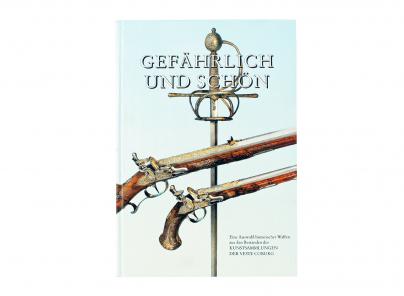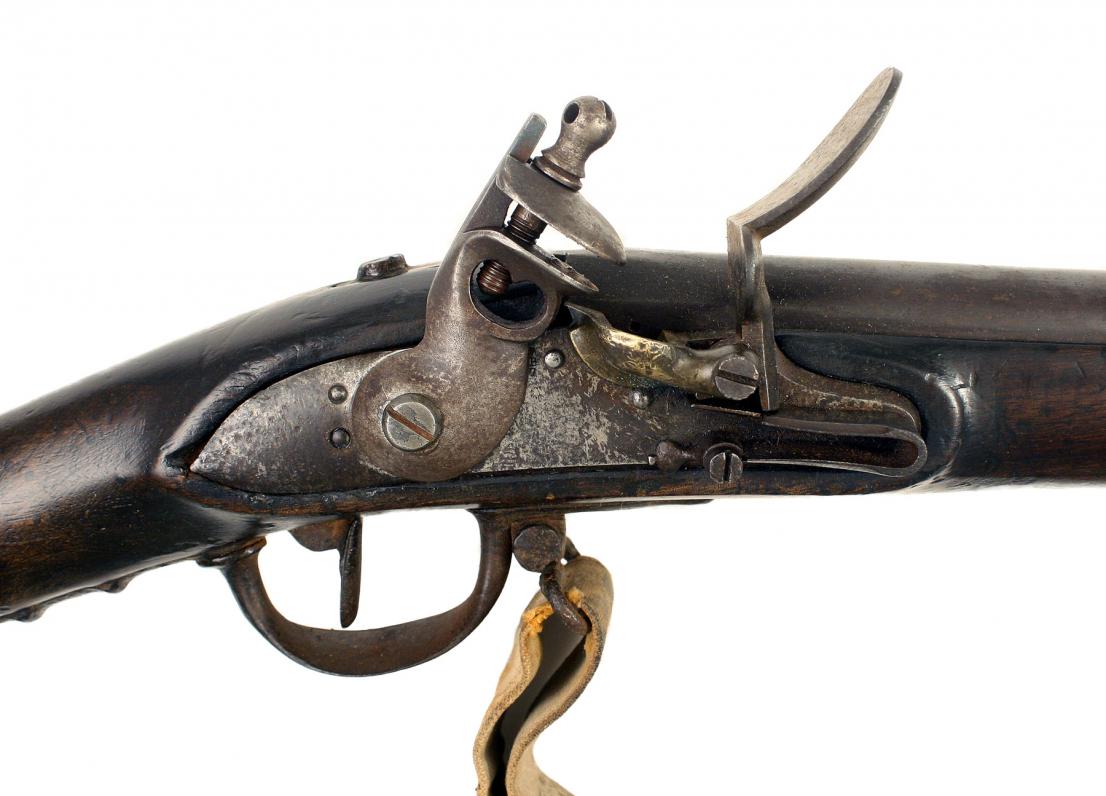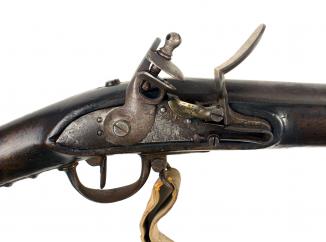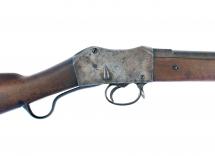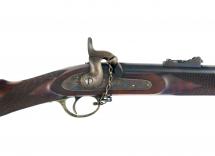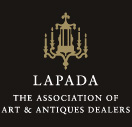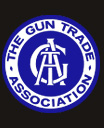A Scarce Dutch 1815 Musket
Development
After Napoleon's first abdication in 1814, French troops were withdrawn from Holland and Belgium and the two countries were brought together to form the United Kingdom of the Netherlands. Prince William of Orange was declared King William I, and Brussels was chosen to be his capital.
The new Dutch-Belgian army consisted mainly of units that had served Napoleon until a year previously – some of them in the Imperial Guard, the elite of the French army. As a result, the army was accustomed to French tactics and equipment. The majority of their forces were equipped with their old issue French musket – the Model 1777/ Year IX –many of which had been made by Malherbe of Liege.
By the summer of 1815, the army of the Netherlands was in the midst of re-organisation and re-equipment. A Royal Dutch commission had been appointed the year before, and had recommended building a new musket, originally to be called the Model 1814 (later to be known as the Model 1815).
In outward appearance, the new musket would not be dissimilar to the French Year IX musket. It was built in two versions known as the No.1 and the No.2 – the difference being in the length of the barrel. The Model 1815 No.1 had a barrel length of 111.8 cm and the Model 1815 No.2 had a barrel length of 108.4 cm. In September 1814, the company Devilliers of Liege was contracted to supply 20,000 No.1 muskets and 8,000 No.2 muskets, the price of which was to be 13.15 francs each. It would have been these muskets that saw service on the field of Waterloo.
The quantities of Model 1815 Nos. 1 and 2 (and No.3: a later percussion modification) that were made between 1814 and 1842 were:
* J Devillers: approx. 120,000 Nos.1 & 2
* Gebr. Malherbe: 52,000 Nos.1 & 2
* PJ Malherbe: 10,000 Nos.1 & 2
* MJ Malherbe de Goffontaine: 6,000 No.1
* JL de Loneux fils: 26,000 Nos.1 & 2
* P Lebens: 19,000 Nos.1 & 2
* J Walker (Birmingham): 8,000 Nos.1 & 2
* W&H Spangenberg: approx. 12,000 No.1
Use and Effect
One of the serious drawbacks that the Dutch faced at Waterloo was that many of their muskets were chambered for French ammunition – .69 in balls. This caused significant logistical problems as they were not compatible with their English and German allies, whose balls were of a larger calibre (.725 in). The situation was not wholly desperate as some troops were armed with British India Pattern muskets and the Dutch had also issued some other troops with converted French muskets, in which the barrels had been exchanged for British ones in the British calibre.
The performance of this musket was no different to the British India Pattern musket.
THE ROYAL ARMOURIES collection.royalarmouries.org [online] https://collections.royalarmouries.org/battle-of-waterloo/arms-and-armour/type/rac-narrative-271.html








